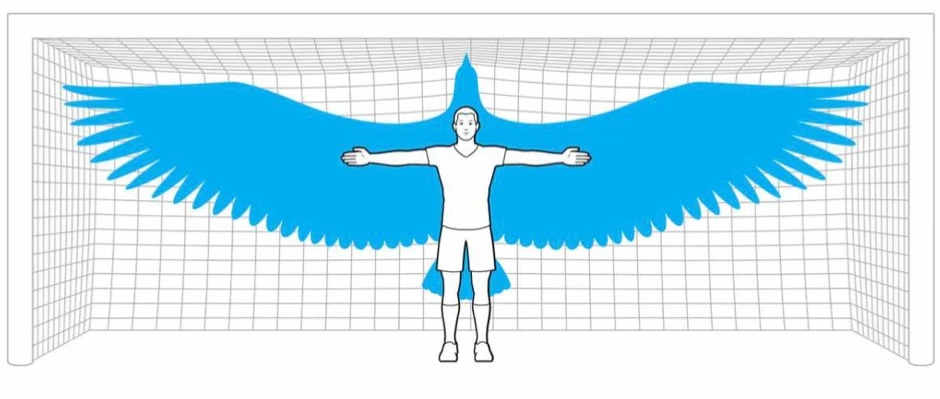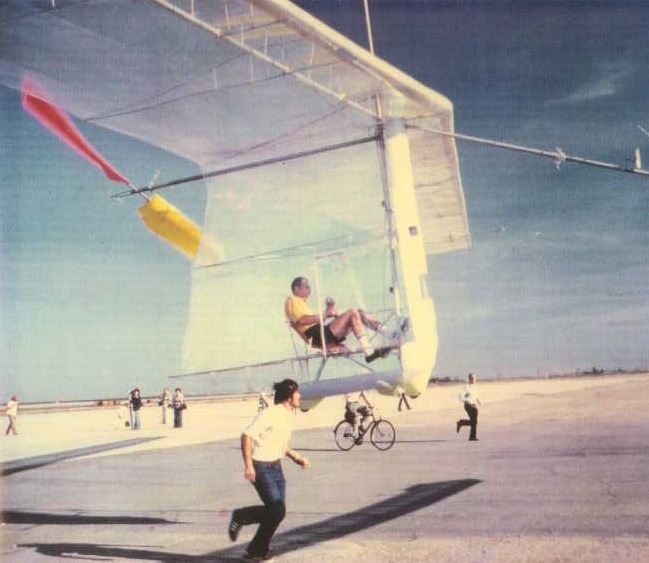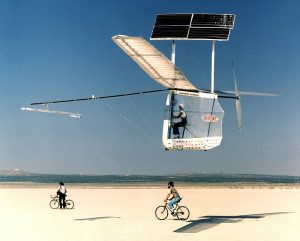If Humans Could Fly How Big Would Their Wings Have to Be?
If Humans Could Fly How Big Would Their Wings Have to Be? : In short…Very Big!
 Lift
Lift

Humans were clearly not meant to fly … we weigh a lot more in proportion to our size than birds, which have hollow bones
In order to fly, wings have to create as much lift upward as the person’s weight pulls downward. There is a minimum forward speed and a minimum wing area to create the needed lift.
The equation for lift is :
d = density of the air
v = velocity of the wing or plane
A = area of the wing
When you do the calculations, you find that for a person of average size to fly they would need a wingspan of between 6 to 7m. In addition their chest muscles would need to project out to about 1.25m. We’d also need a ‘keel’ bone protruding down the centre of our chest, to allow these pectoral muscles to attach further from the shoulder, increasing the leverage. Our legs would have to be spindly stilts as well. Not practical at all.

Humans were clearly not meant to fly! Remember, we weigh a lot more in proportion to our size than birds, which have hollow bones.
 Man-Powered Flight
Man-Powered Flight
 That said, human-powered flight is possible. In 1977, Paul MacCready won the $100,000 Kremer prize for designing the Gossamer Condor, which flew a figure eight, 1 mile-long course. MacCready calculated that a good bicyclist could develop, or generate, one-third horsepower almost indefinitely. All he needed to do was find a design that kept the weight down and provided a huge wing, sort of like a super-hang-glider.
That said, human-powered flight is possible. In 1977, Paul MacCready won the $100,000 Kremer prize for designing the Gossamer Condor, which flew a figure eight, 1 mile-long course. MacCready calculated that a good bicyclist could develop, or generate, one-third horsepower almost indefinitely. All he needed to do was find a design that kept the weight down and provided a huge wing, sort of like a super-hang-glider.
Athlete-bicyclist Bryan Alien powered the Gossamer Condor on August 23, 1977. He sat in a cockpit of 0.016-inch(4.5mm) thick see-through Mylar, pedalling a bicycle- like mechanism that turned a propeller. The wingspan was 96 feet (29.26m) and the plane weighed a mere 70 pounds(31.75Kg). The flight took him 7.5 minutes.
 Two years later, MacCready designed the carbon fiber Gossamer Albatross which flew the English Channel and won a new $214,000 Kremer prize. The 22-mile distance was covered in a little less than 3 hours, with a top speed of 18 mph , 5 feet above the waves. Today the Gossamer Albatross hangs in the Smithsonian National Air and space Museum.
Two years later, MacCready designed the carbon fiber Gossamer Albatross which flew the English Channel and won a new $214,000 Kremer prize. The 22-mile distance was covered in a little less than 3 hours, with a top speed of 18 mph , 5 feet above the waves. Today the Gossamer Albatross hangs in the Smithsonian National Air and space Museum.







You must be logged in to post a comment.